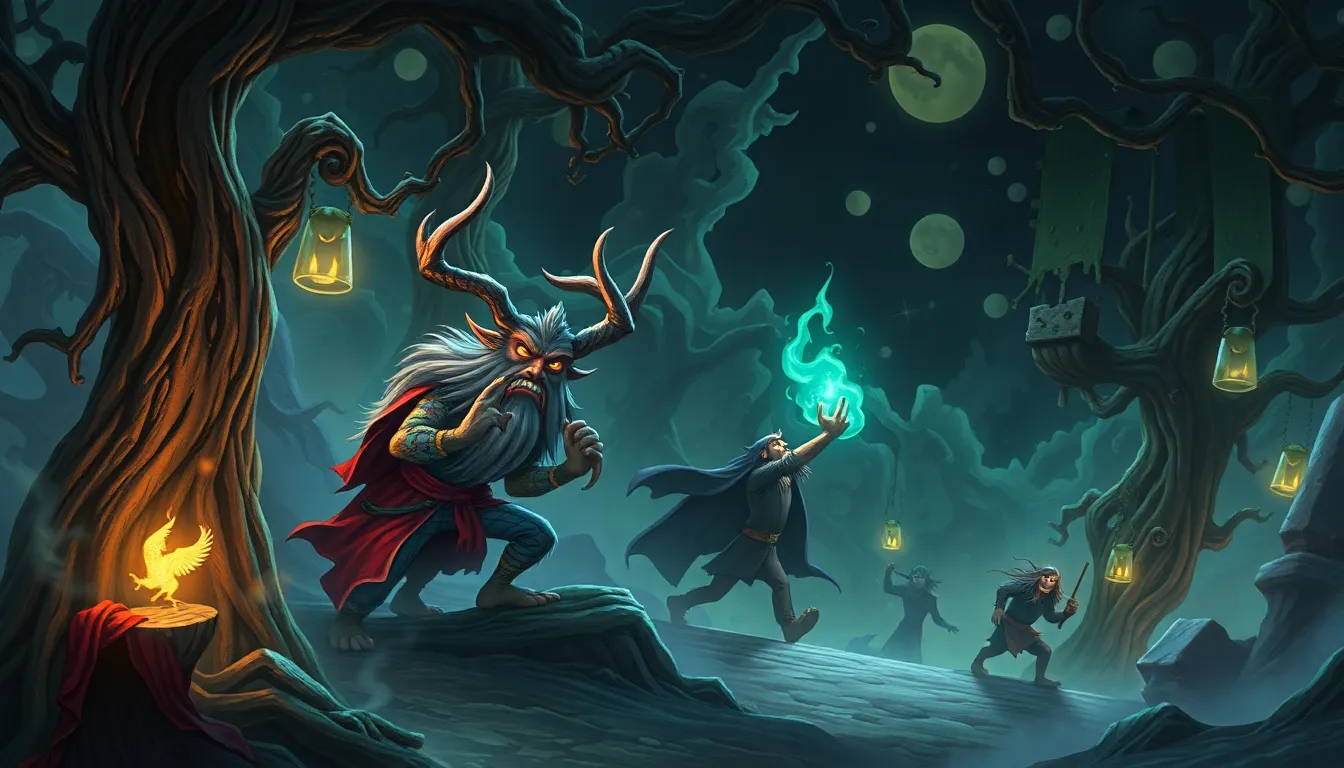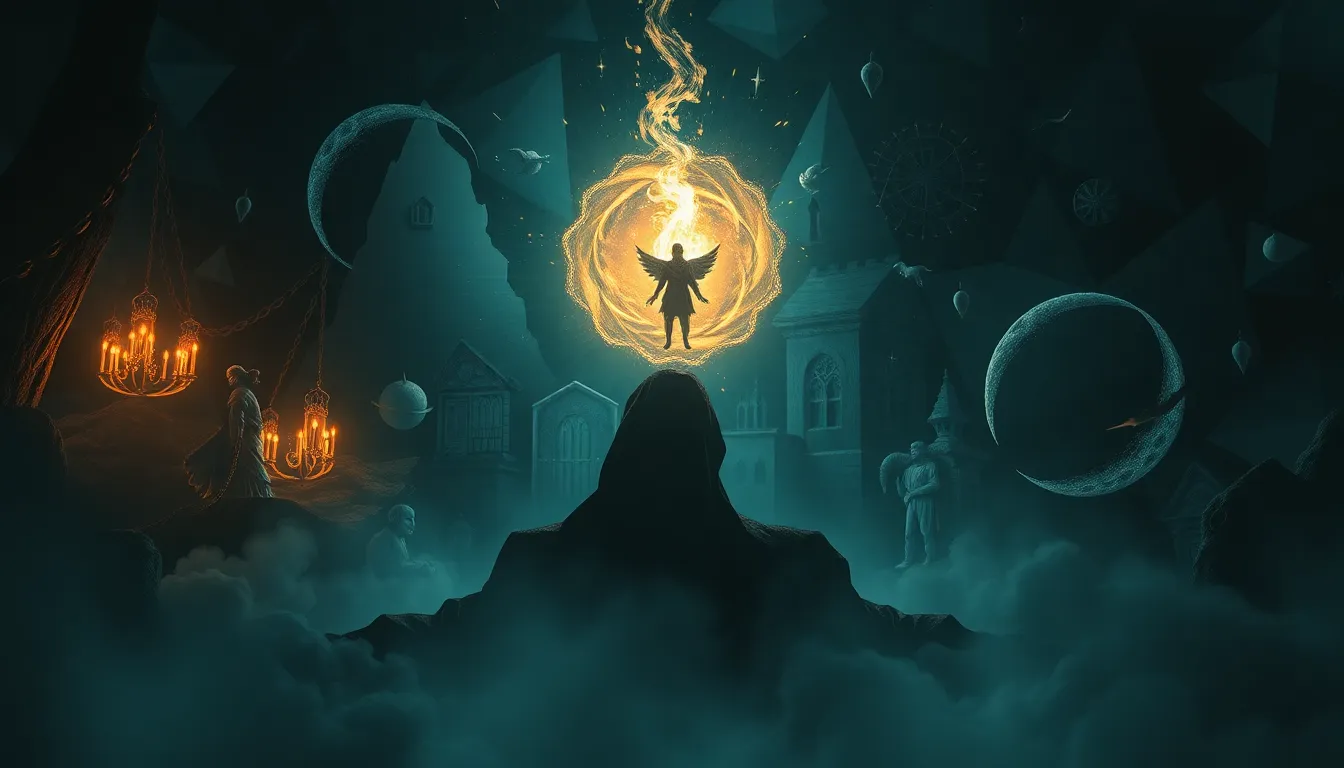Trickster Tales: The Humor Behind the Chaos
Introduction to Trickster Tales
Trickster tales are a fascinating and integral part of folklore across various cultures. Defined as stories featuring a central character known as the trickster, these narratives often blend humor with moral lessons, showcasing the complexities of human nature. The trickster can be mischievous, clever, and unpredictable, embodying both chaos and creativity. The importance of humor in these tales is profound, as it serves to entertain while also provoking thought.
Tricksters play a crucial role in storytelling traditions worldwide—from the cunning Anansi of African folklore to the crafty Coyote in Native American tales, and the infamous Loki in Norse mythology. Each of these characters navigates their world with wit and guile, challenging the norms and expectations of their societies.
Historical Roots of Trickster Archetypes
The origins of trickster archetypes can be traced back to ancient folklore and mythology, where they often served as cultural catalysts. These figures are not merely entertainers; they represent deeper truths about humanity and society.
- Anansi: The spider trickster from West African folklore, Anansi is known for using his intelligence to outsmart larger foes and teach moral lessons through his antics.
- Coyote: A prominent figure in many Native American cultures, Coyote embodies the duality of creation and destruction, often learning valuable lessons through his misadventures.
- Loki: In Norse mythology, Loki’s mischief often leads to significant consequences, highlighting themes of chaos, transformation, and the fine line between good and evil.
Through time, the trickster figure has evolved, adapting to the cultural and societal changes of the eras they inhabit, yet retaining their core attributes of cleverness and irreverence.
The Psychology of the Trickster
The appeal of trickster characters lies in their ability to subvert expectations and challenge the status quo. They often embody a duality—simultaneously representing chaos and order. This complexity resonates with audiences, allowing for a deeper psychological engagement.
Several psychological theories help explain the popularity of tricksters:
- Humor as a Coping Mechanism: Tricksters use humor to navigate difficult situations, reflecting our own struggles with societal norms.
- Subversion of Authority: By challenging established norms, tricksters empower individuals to question authority and seek change.
- Duality of Nature: The trickster’s ability to oscillate between roles allows them to explore the nuances of identity and morality.
Common Themes in Trickster Tales
Trickster tales are rich with themes that resonate with human experiences. Some of the most common include:
- Deception and Cleverness: These traits often serve as survival mechanisms, showcasing how wit can triumph over brute strength.
- Power and Vulnerability: Many tales explore the interplay between the powerful and the powerless, often flipping societal hierarchies on their heads.
- Moral Lessons: Beneath the humor and chaos, trickster tales frequently impart important morals, challenging readers to reflect on their own choices.
Cultural Variations in Trickster Tales
Trickster tales vary significantly across cultures, each embodying unique perspectives and values. Here’s a brief overview of some notable tricksters from different regions:
- African Tricksters: Characters like Anansi often highlight themes of community and wisdom.
- Native American Tricksters: Coyote and Raven are central to many tales, emphasizing the connection between nature and humanity.
- European Tricksters: Figures like Reynard the Fox reflect themes of cunning and social critique.
- Asian Tricksters: The Monkey King from Chinese mythology embodies intelligence and rebellion against authority.
These variations illustrate how cultural context shapes the interpretation of humor and the lessons conveyed through trickster stories.
The Role of Humor in Trickster Tales
Humor functions as a vital component in trickster tales, employing various techniques such as:
- Satire: Critiquing societal norms and politics through humor.
- Irony: Highlighting the discrepancies between expectations and reality.
- Absurdity: Creating situations that defy logic, provoking laughter and reflection.
This humor serves as a coping mechanism for societal issues, allowing audiences to confront uncomfortable truths in a palatable way. However, the balance between humor and moral lessons is delicate; while tricksters entertain, they also compel us to think critically about the world around us.
Modern Interpretations of Trickster Tales
In contemporary literature and media, trickster figures continue to thrive. The adaptation of these characters into films, television series, and books showcases their enduring relevance. For instance:
- In literature, authors like Neil Gaiman incorporate trickster elements into their narratives, creating rich, complex characters.
- In film, characters such as the Joker from the Batman franchise embody the chaos and unpredictability of the trickster archetype.
- Television shows like “Rick and Morty” utilize humor and absurdity akin to traditional trickster tales, critiquing societal norms.
The resurgence of trickster figures in social and political commentary highlights their power as cultural icons, allowing for a fresh examination of contemporary issues.
Trickster Tales as a Reflection of Society
Trickster tales often mirror societal norms and taboos, revealing deeper truths about human behavior. The role of the trickster as a challenger of authority is particularly significant, as these characters often expose the flaws and absurdities of those in power.
Case studies of specific tales illustrate this phenomenon:
- The story of Coyote stealing fire from the gods demonstrates the trickster’s role in challenging divine authority and altering the balance of power.
- Anansi’s tales often critique societal hierarchies, showcasing the triumph of the underdog over the oppressor.
Through these narratives, tricksters encourage audiences to question established norms and consider alternative perspectives.
The Impact of Trickster Tales on Folklore and Literature
Trickster stories have significantly influenced narrative structures in folklore and literature. These characters often serve as catalysts for change, driving plots forward and challenging protagonists to grow. The continued relevance of trickster tales in modern storytelling reflects their timeless appeal and the universal themes they explore.
As catalysts for change, tricksters remind us that life is often unpredictable, and embracing chaos can lead to new insights and transformations.
Conclusion: Embracing Chaos and Humor in Life
In reflecting on the lessons learned from trickster tales, we find that humor is essential in navigating the chaos of life. These narratives encourage us to embrace uncertainty, challenge authority, and find joy in the unpredictable.
As we explore our own lives, let us encourage our inner trickster to emerge, using humor and cleverness to face challenges and inspire change. After all, in a world fraught with chaos, a little laughter can go a long way.



